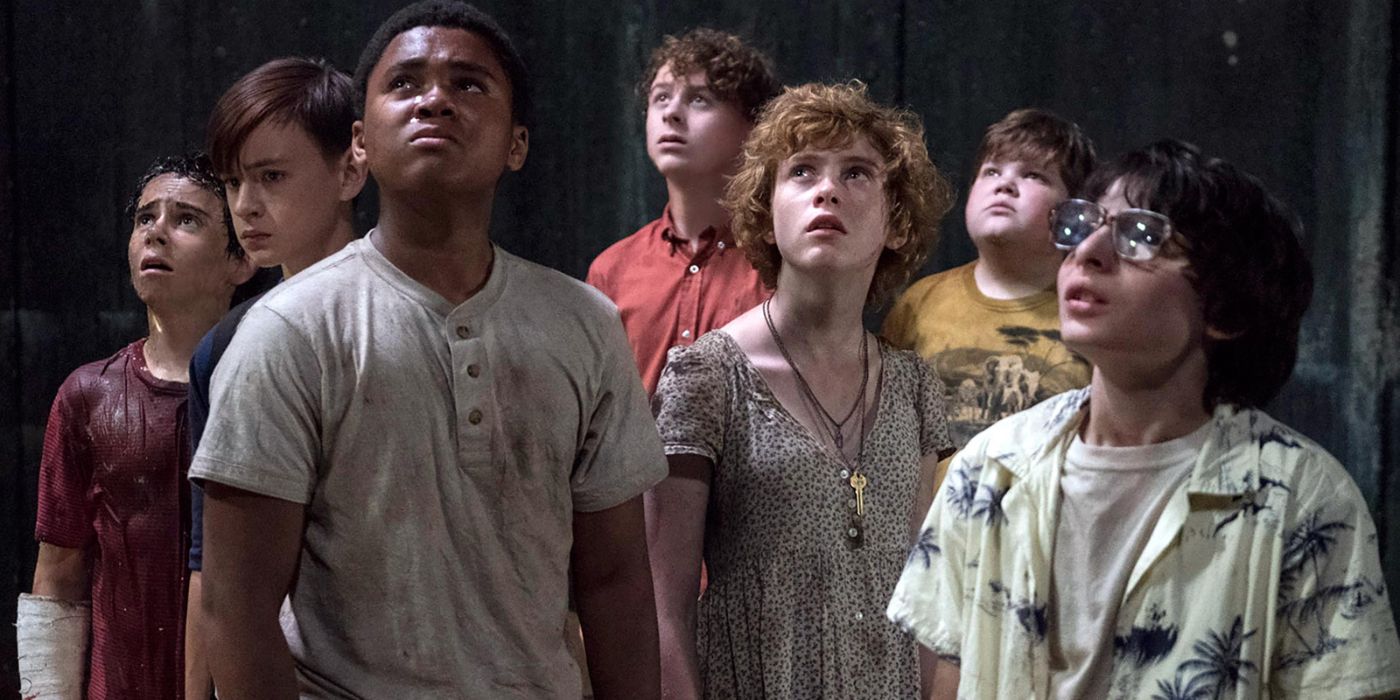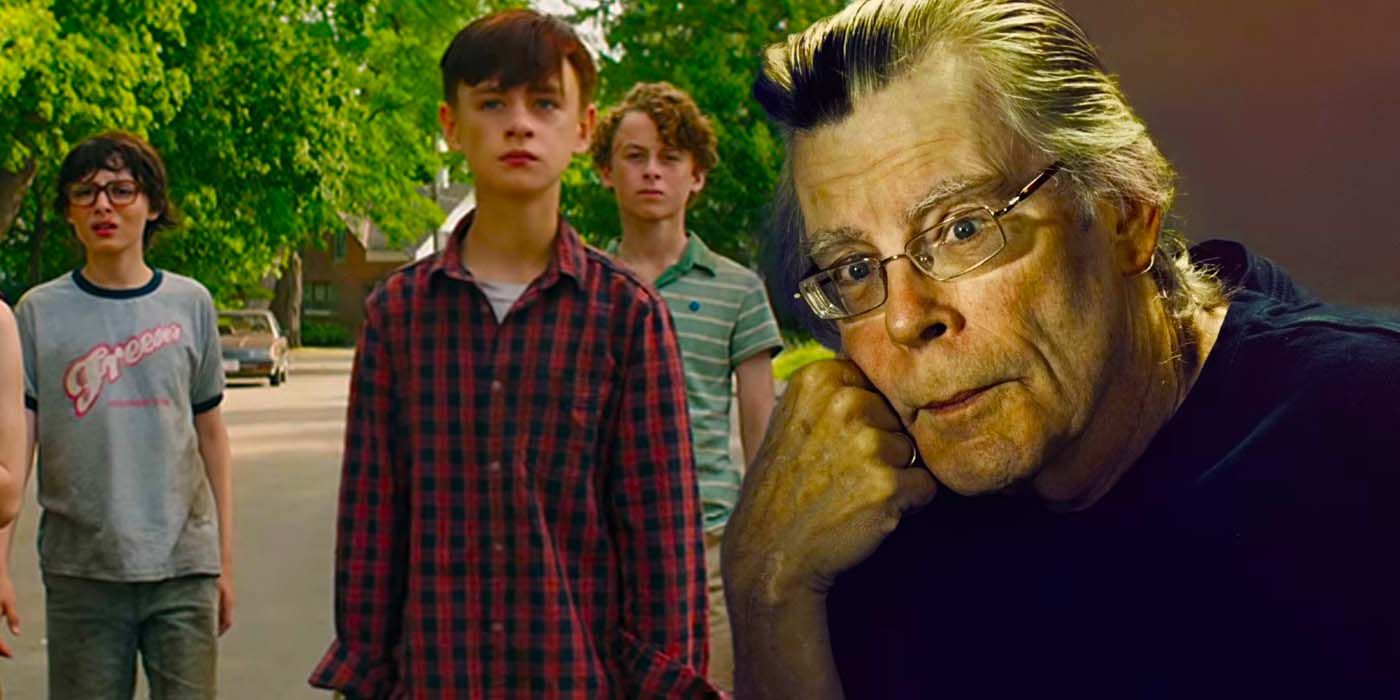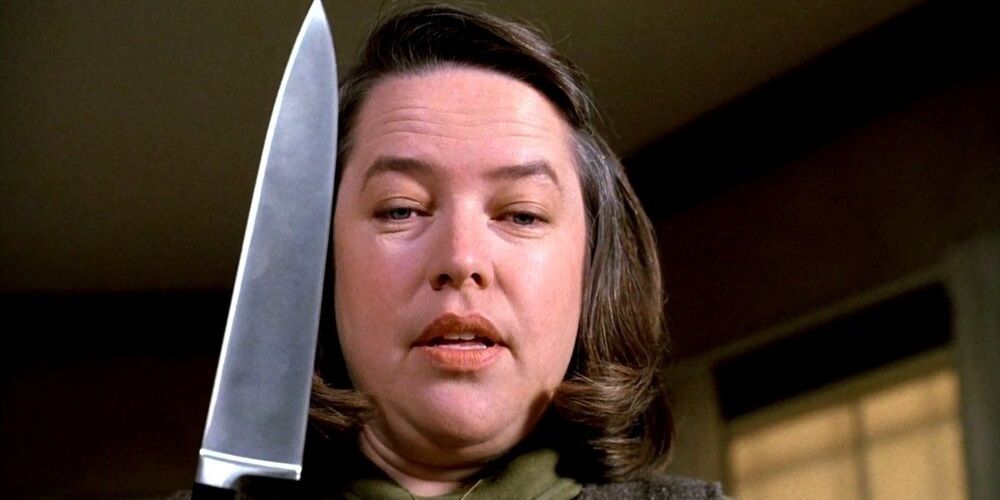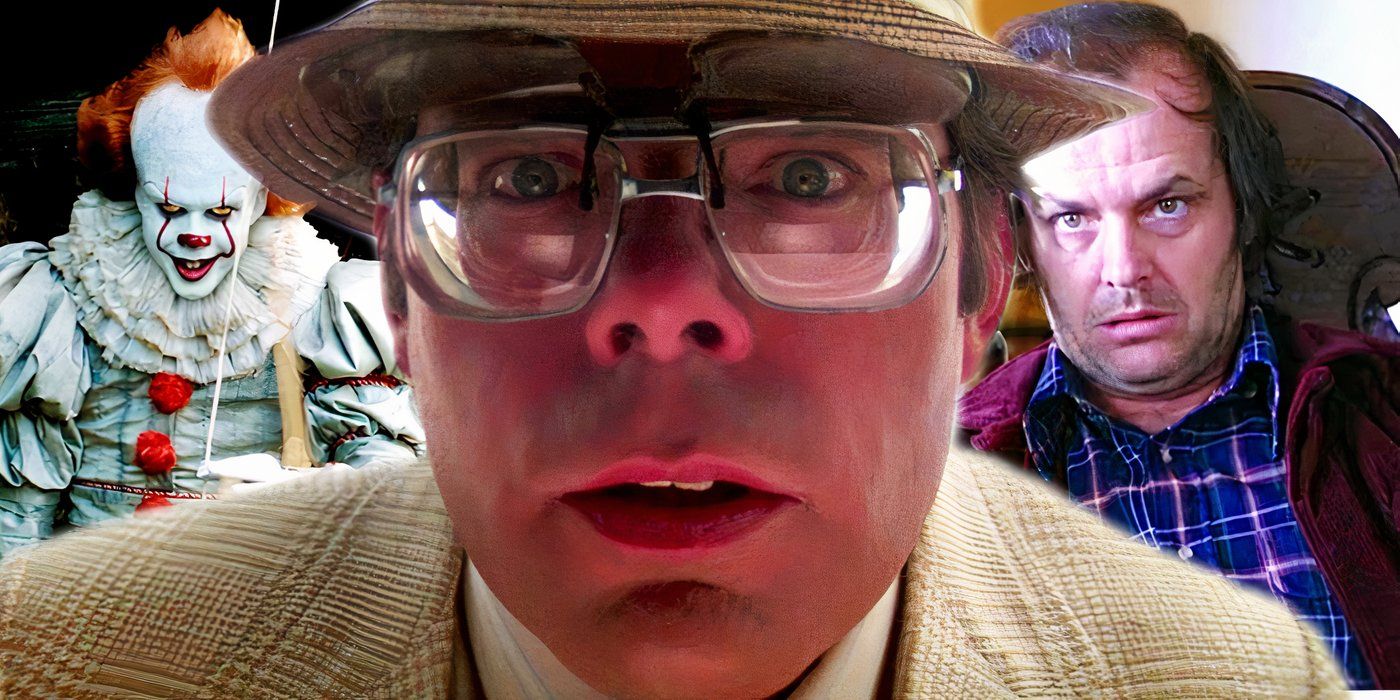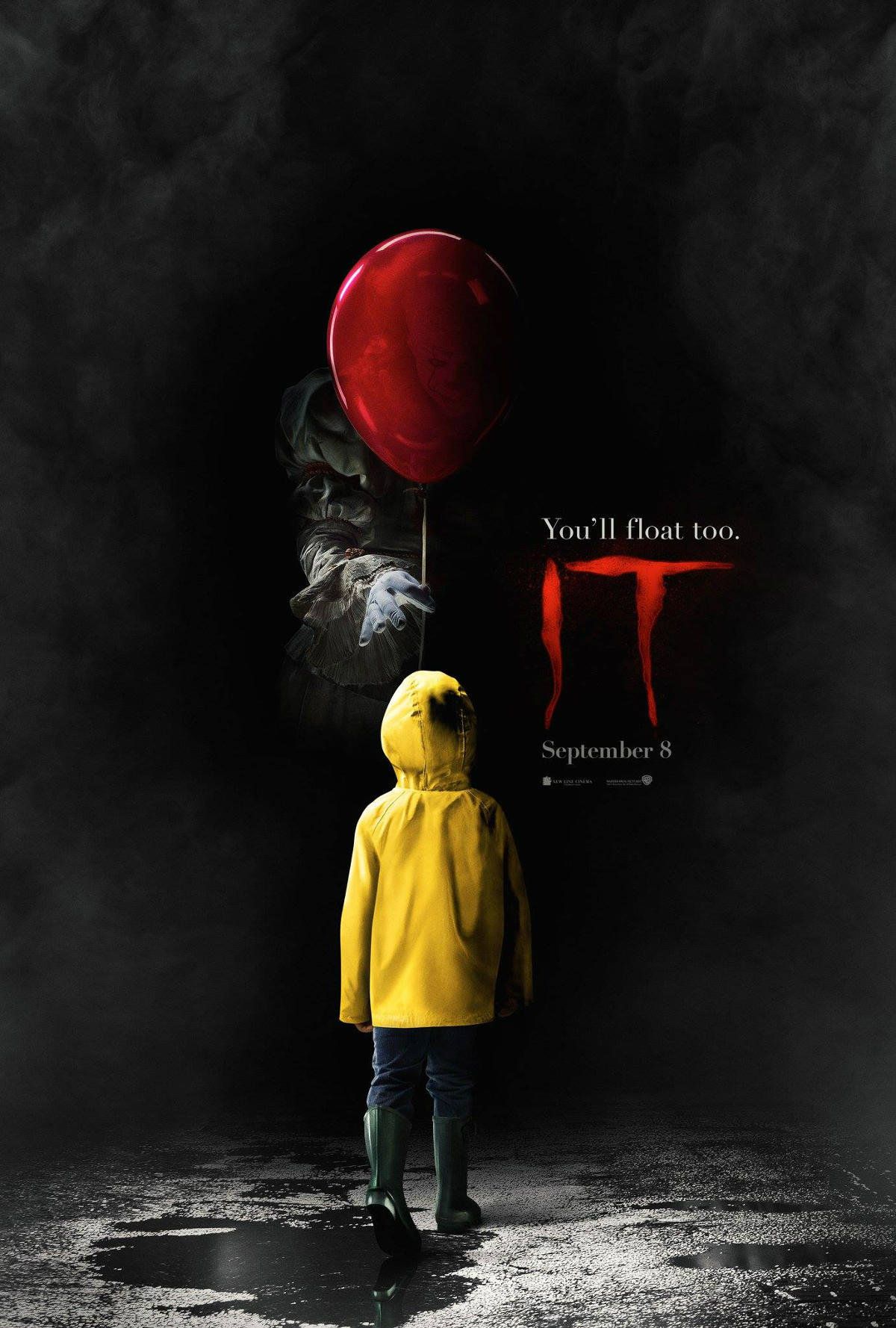Summary
- The controversial sewer scene in Stephen King’s novel
IT
, involving Beverly and the Losers Club, has not been adapted into any TV or film adaptations for understandable reasons. - The sewer scene had a symbolic meaning in the book, representing the bond between childhood and adulthood and the unity of the Losers Club. It was meant to show their growth and escape from the tunnels.
- Stephen King himself has acknowledged the controversy surrounding the sewer scene and has stated that it wouldn’t be appropriate in today’s climate. However, he also defends its thematic relevance within the story.
A controversial IT Beverly scene from Stephen King’s novel hasn’t been adapted to TV or film (for good reason), but the IT sewer scene has a symbolic meaning that gets lost in the controversy. In 1986, Stephen King terrorized readers with the novel IT, which introduced an otherworldly monster that triggered a wave of coulrophobia (fear of clowns). IT is now a classic novel in the horror genre, which has expanded thanks to its different adaptations, most recently the films directed by Andy Muschietti. However, the IT book gained notoriety not only for its quality, but also for the now-infamous sewer scene.
The novel can be divided into two parts: the first set in 1957-1958, following the Losers as kids, and the second set in 1984-1985, following the group as adults. In the end, the adult Losers Club members can defeat Pennywise once and for all by challenging IT in the sewers, with Bill locating and destroying the creature’s heart. However, there was a controversial IT scene no film adaptations have included. Stephen King’s IT also has the Losers battle the malevolent Pennywise in the sewers of Derry 27 years earlier, and the novel’s most controversial moment, by far, was the book’s IT Beverly sewer scene.
Related
Welcome To Derry: Cast, Story, Teaser Trailer & Everything We Know About The It Prequel Series
HBO’s It prequel series Welcome to Derry will finally flesh out the origins of Pennywise and show how his reign of terror impacted Derry in the 1960s.
Why The Sewer Scene In IT Is So Controversial
Stephen King’s Original Novel Included Sexual Acts Between Children
Once in the sewers, Bill Denbrough performed the “Ritual of Chüd” through which he met Maturin (best known as “the turtle”), creator of the universe and the antithesis of IT, who explained to Bill that the only way IT could be defeated was through a battle of wills. Bill then entered IT’s mind and saw its true form, known as the “deadlights,” and managed to defeat it, albeit only temporarily.
This would lead to one of the biggest Stephen King book controversies: after the Losers become lost in the sewers trying to make their way back to the surface in IT, Beverly decides to have sexual intercourse with all the boys from the Losers Club.
She decides to do this as it allows them to remember the way back so they can make it home. Essentially, her logic was that by taking this step they’d lose their innocence and become adults (and thus not the prey Pennywise wanted), and in the process, he’d lose his influence over them too. Despite the narrative reasoning, it doesn’t change the fact that Beverley and the Losers Club are eleven years old. Stephen King’s IT sewer scene was the result of a creative decision that ended up being extremely controversial, and still looms over the book decades later.
What The IT Sewer Scene Really Means
The Beverly Sewer Scene Just Included For Shock Value
The controversial sewer scene in the original IT wasn’t random: in the book, Beverly realized that they were not going to find the exit without being unified, as they had been before weakening and defeating Pennywise, and the only way she could find to rebuild that bond between them was by having sex with each of her friends. Of course, such a scene involving underage characters was extremely controversial and has been left out of all adaptations, but it has a meaning that goes beyond the act itself.
In 2013, Stephen King (through his office manager Marsha DeFillipo) shared on the message board of his official site what the controversial scene in the sewers represents, and begins by explaining that, at the time, he wasn’t thinking of the sexual aspect of it. Instead, he wrote it as the connecting link between childhood and adulthood, as the Losers Club knew they had to be together again, and described it as “another version of the glass tunnel that connects the children’s library and the adult library.” King added that he’s aware that, with time, there has been more sensitivity and attention to issues like the underage sex depicted in IT‘s sewer scene.
With the infamy of the sex content, it’s understandable that IT‘s controversial sewer scene was left out of the 1990 miniseries and Muschietti’s film, as it would be an extremely difficult scene to adapt for many (obvious) reasons. One of the screenwriters of IT, Gary Dauberman, told EW that the IT sex scene is one that “everybody kind of brings up” and that’s “such a shame” as other important things are happening in the story. He added that, while they understood the scene’s intentions, they “tried to accomplish what the intent was in a different way.”
Whether the scene captures Stephen King’s intent is up to every reader, but it’s important to know that the IT sewer scene, as controversial as it understandably remains, is not there just to add shock value in Beverly Marsh’s character arc. It did have a function when Stephen King wrote it, and the fact that it’s not been removed in editorial at any point in the decades of republishes and re-releases IT has received over the decades proves this.
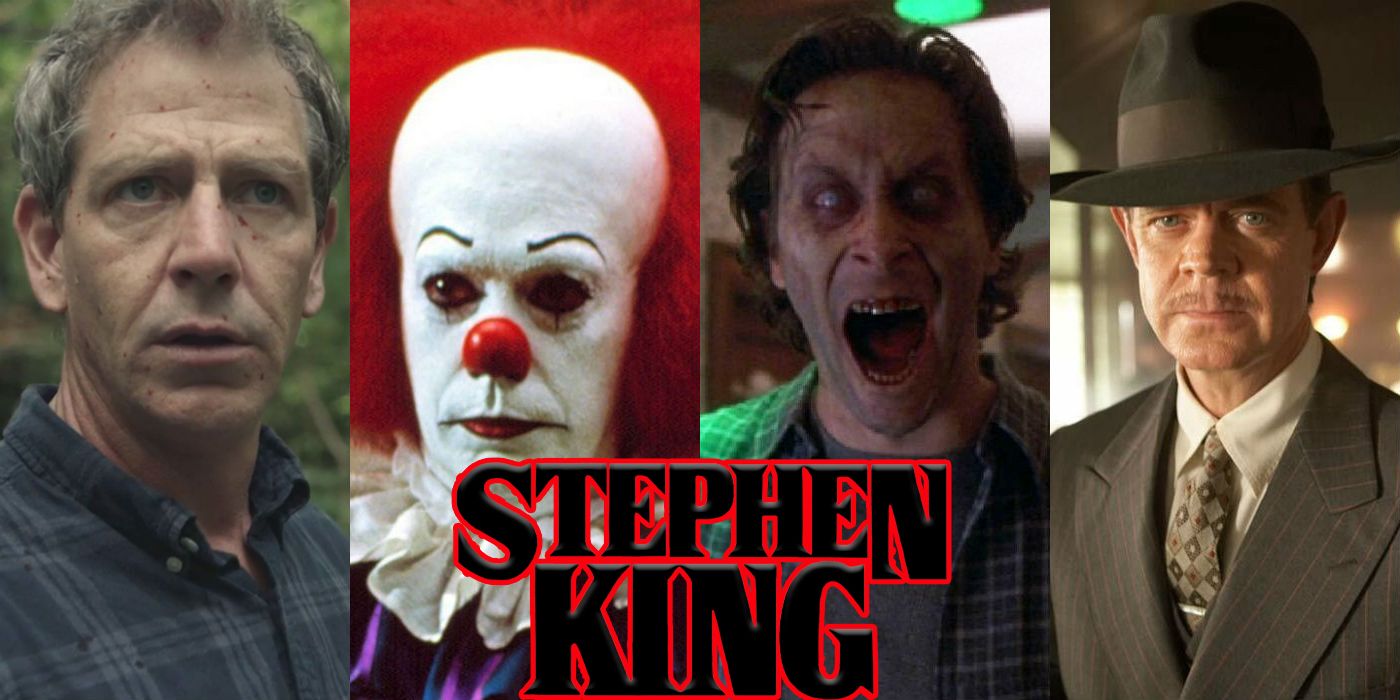
Related
What Stephen King Thinks Of Every Adaptation (Movies & TV Shows)
Stephen King is one of the most adapted authors ever, and here’s a collection of the opinions he’s offered about those various movies and TV shows.
What Stephen King Has Said About The IT Sewer Orgy
The Author Finds The Fascination With The Beverly Sewer Scene Perplexing
The Stephen King IT sewer orgy scene is obviously very controversial, and as previously mentioned, Stephen King has addressed it. There’s absolutely no way that the scene could’ve made it into the movie, nor should anyone want it to be there, as the film already contains graphic scenes of child abuse and mutilation. As mentioned, the author took to his own message board in 2013 to further discuss the scene, and likened it to a passageway from childhood into adulthood.
After all, the IT book and the movies both deal with issues of childhood and adulthood, and a good deal of the themes have to do with growing up. He also explained that the scene was meant to show the Losers Club growing closer and banding together, and that it was a necessary act for them to escape the tunnels. However, he also went on to say that the scene hasn’t aged well. Here’s what horror novelist Stephen King had to say in full:
I wasn’t really thinking of the sexual aspect of it. The book dealt with childhood and adulthood –1958 and Grown Ups. The grown ups don’t remember their childhood. None of us remember what we did as children–we think we do, but we don’t remember it as it really happened. Intuitively, the Losers knew they had to be together again. The sexual act connected childhood and adulthood. It’s another version of the glass tunnel that connects the children’s library and the adult library. Times have changed since I wrote that scene and there is now more sensitivity to those issues.
Whether one could blame the passage of time being the culprit behind IT‘s sewer orgy scene’s notoriety is questionable, but at least the author acknowledged that it wouldn’t fly in this day and age. While the sewer scene in IT is meant to have substantial thematic relevance, it still stands out against the rest of the book as something that might not have warranted inclusion. While it isn’t gratuitous or particularly graphic in nature, the infamous sewer orgy scene in IT will always be remembered as one of Stephen King’s most controversial writings, comparable to the Trash Can Man’s pistol sodomy in The Stand.
That being said, author King finds it fascinating just how much controversy the scene has attracted. In 2017 (via Vulture), he remarked on the response to that particular moment “it’s fascinating to me that there has been so much comment about that single sex scene and so little about the multiple child murders. That must mean something, but I’m not sure what.”
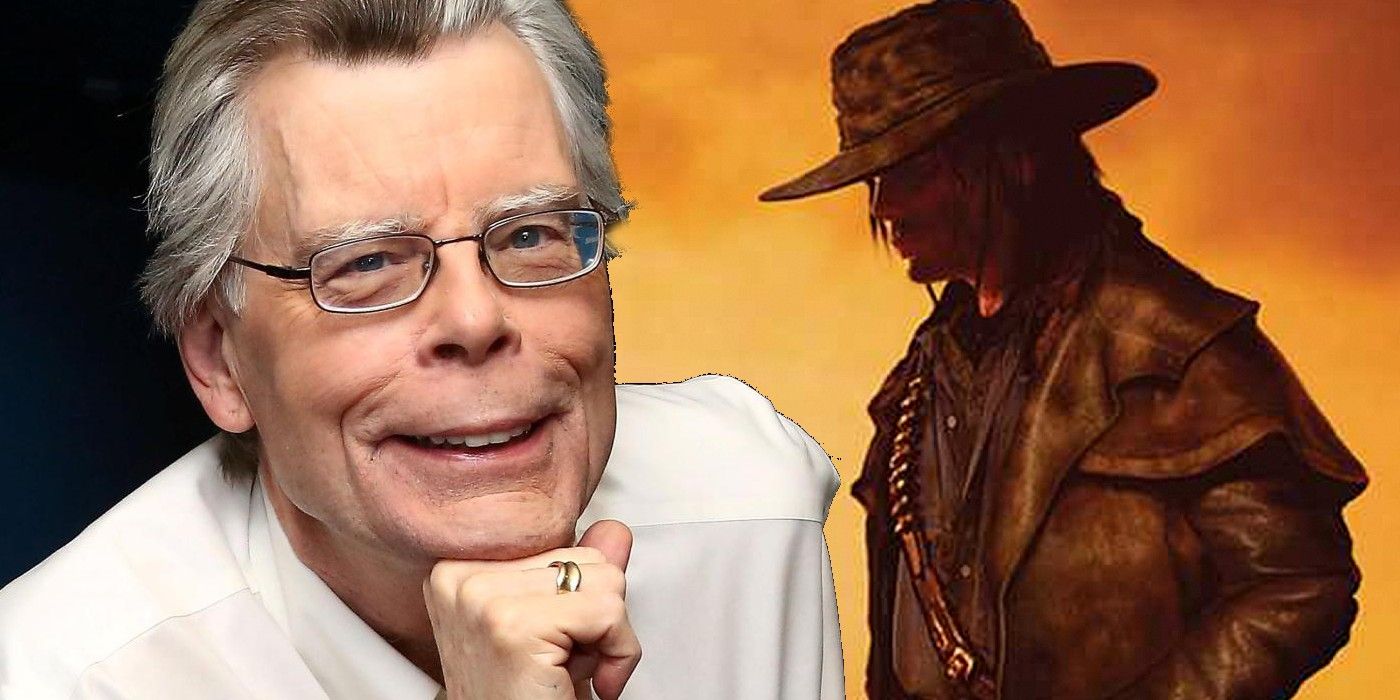
Related
15 Essential Stephen King Stories Better Than The Movies
Films like The Shining and It are classic Stephen King horror staples, but the author has plenty of works that have yet to be properly adapted.
Other Stephen King Novel Moments Too Gross For Movie Adaptations
The IT Sewer Scene Isn’t The Only Stephen King Moment Too Shocking For Screens
Movies based on Stephen King’s books are generally known for being creepy and disturbing — but many are far tamer than the source material. As nightmarish as movies like IT, Misery, and The Shining can get, they don’t hold a candle to Stephen King’s written works when it comes to providing absolute nightmare fuel. The IT sewer scene cut from every screen adaptation of IT is the most infamous example, but it’s far from the only time screenwriters noped out of staying 100% faithful to Stephen King’s original text.
In 1993, George Romero adapted The Dark Half, a lesser-known King novel he wrote under his Richard Bachman pseudonym. While George Romero is no stranger to the visceral, finding his own acclaim directing movies like Night of the Living Dead, even he felt King’s depiction of cop Edding getting brutally castrated in The Dark Half was too much for the big screen.
The already harrowing and underrated Misery adaptation is, in fact, a watered-down presentation of King’s vision. Kathy Bates terrified audiences as Annie Wilkes, with many unable to look at a mallet the same way ever again. If director Rob Reiner had opted to adapt and include the detailed passage where Annie drives over a state trooper with a lawnmower, 1991 would probably have been known as The Summer of Untrimmed Grass.
Stephen King is one of the most acclaimed horror authors of all time. This is in no small part because he doesn’t shy away from graphic depictions of sex or violence, and often merges the two. However, as his critics have always begrudgingly admitted, it’s intense but not gratuitous. Stephen King writes stories with a purpose and doesn’t shock without reason. Every castrated cop or lawn covered in state trooper entrails either drives the plot forward or is a skillful metaphor for a thematic concept.
Movies are different from books though, and different rules apply. The IT Sewer Scene works in a book because readers are privy to the character’s inner thoughts and drives, which gives clear context for it being symbolically tied to the loss of innocence. Including it in the movie adaptations of IT wouldn’t only be inappropriate, because it would require the heavy sexualization of children and the real-life child actors who have to play them (a hard pass for limitless reasons). Without the insight only deliverable in the written format, the IT sewer scene couldn’t be effective as anything other than a shock for shock’s sake.
Where The Sewer Ranks Among Stephen King’s Most Talked About Book Moments
Almost Nothing Stephen King Has Written Is Discussed As Frequently
The IT sewer sex scene is one of the most controversial Stephen King book moments, and has gained a level of notoriety that almost surpasses the rest of the novel. However, it’s far from the only shocking scene in Stephen King’s bibliography. The author reached such high levels of acclaim partly due to never being afraid to push himself or the reader into uncomfortable territory. This has, understandably, led to several other moments in his stories, like the IT book sewer scene, that became talking points.
Many of these moments also appear in Stephen King books that have been adapted into movies. For example, in the Carrie novel, there’s an incredibly difficult conversation the titular character has with Sue Snell following her rampage at the school prom. Carrie learns, much to her guilt, that the carnage she’d caused had placed so much stress on Sue that she’d suffered a miscarriage. King holds nothing back during this passage, and fully dives into the levels of emotional trauma felt by Sue, and the sense of loss she felt — an especially difficult read given how young the character is, too.
There’s also, of course, the moment in The Shining when Jack disfigures his own face with a mallet. Given how many shocking moments there are in The Shining in general, it shows just how visceral and disturbing the sequence is that it’s highlighted repeatedly by readers. It’s also no surprise that it didn’t make it into Stanley Kubrick’s movie adaptation, as it is, in no uncertain terms, grotesque.
However, as shocking and infamous as these moments and others like them are, none are as widely discussed or well known as the IT sewer sex scene. As much as Stephen King himself may find the borderline-obsession readers have with it perplexing, it’s easy to see why it’s become so well-known as one of the most stomach-turning scenes from a book in modern literature. This isn’t to take away from its thematic importance of the dexterity with which it was written, as even the most skeptical critic would be hard-pressed to describe it as gratuitous despite the disturbing nature of what’s transpiring.
Still, King’s impressive abilities as a writer don’t detract from the fact that it is, in no uncertain terms, a scene about a group of children losing their innocence in a dank sewer while being pursued by a demonic clown. The IT sewer sex scene is incredibly difficult to read simply due to what’s happening, and nothing else King has written — no matter how gory or psychologically chilling — has even come close to matching this moment from the IT book when it comes to infamy.



